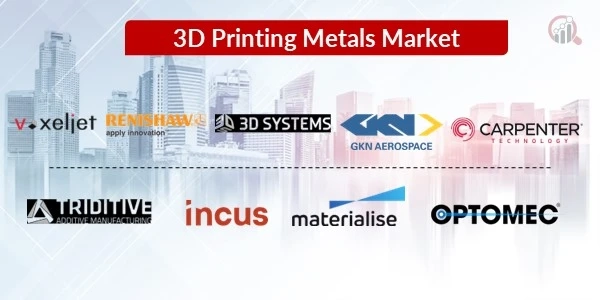Introduction:
In the realm of advanced manufacturing, 3D printing with metal has emerged as a transformative technology, unlocking new possibilities in design, efficiency, and customization. At the forefront of this industrial revolution are 3D printing metal companies, pioneering innovations that are reshaping how industries approach production. This article delves into the world of these cutting-edge companies, exploring their contributions, technological advancements, and the impact on the future of manufacturing.
Market Leaders:
Several companies have established themselves as leaders in the 3D printing metal industry, each contributing unique expertise and technologies to the rapidly evolving landscape. Among these leaders are General Electric (GE) Additive, EOS GmbH, and Desktop Metal.
GE Additive, a subsidiary of General Electric, is a global powerhouse in the 3D printing metal sector. Leveraging its vast experience in aviation and engineering, GE Additive has been instrumental in advancing additive manufacturing technologies, particularly in the aerospace and healthcare sectors.
EOS GmbH, a German-based company, is recognized for its cutting-edge industrial 3D printing solutions. EOS specializes in direct metal laser sintering (DMLS) technology, providing precision and efficiency in the production of metal components for diverse applications.
Desktop Metal, a U.S.-based company, is known for its innovative approach to metal 3D printing. Offering a range of systems suitable for various industries, Desktop Metal focuses on making metal 3D printing accessible and practical for a broad user base, including small and medium-sized enterprises.
Technological Advancements:
The success of 3D printing metal companies is closely tied to the continuous advancements in technology. Metal additive manufacturing techniques, such as selective laser melting (SLM) and electron beam melting (EBM), enable the layer-by-layer construction of intricate metal components with unparalleled precision.
The evolution of metal powders, including alloys and exotic materials, has expanded the range of applications for 3D printing metal. This allows industries to produce complex geometries, reduce material waste, and create components with improved mechanical properties, contributing to lighter, stronger, and more efficient products.
Furthermore, innovations in software and design tools are streamlining the process of creating 3D-printable metal components. This integration of digital technologies enhances the customization and complexity of metal parts, empowering industries to create bespoke solutions tailored to specific needs.
Applications Across Industries:
3D printing metal companies are driving transformative change across various industries. In aerospace, for example, the ability to create lightweight yet durable components with intricate geometries is revolutionizing aircraft design. Similarly, in healthcare, patient-specific implants and prosthetics are being produced with unprecedented precision, improving both functionality and patient outcomes.
The automotive industry is adopting 3D printing metal for rapid prototyping, customized parts, and even entire structural components, enhancing vehicle performance and reducing production costs. Energy sectors are leveraging metal 3D printing for the production of high-performance components in challenging environments, contributing to increased efficiency and sustainability.
Environmental Impact and Sustainability:
Beyond its technological prowess, 3D printing metal is making strides in sustainability. The additive manufacturing process generates less waste compared to traditional subtractive methods, where material is cut away from a larger block. Additionally, the ability to optimize designs for strength and weight contributes to resource efficiency.
Some 3D printing metal companies are also exploring the use of recycled materials and environmentally friendly powders, aligning with the growing emphasis on sustainable manufacturing practices.
Conclusion:
3D printing metal companies are reshaping the landscape of manufacturing, offering unprecedented possibilities in design, efficiency, and sustainability. As technology continues to advance, and industries increasingly embrace the potential of metal additive manufacturing, the impact of these companies will continue to reverberate across sectors, fostering a new era of innovation and customization in production. The collaboration between leading companies, technological breakthroughs, and the expanding range of applications signal a promising future where 3D printing metal becomes an integral part of mainstream manufacturing processes.
Read more about this company page: 3D printing metal key companies


